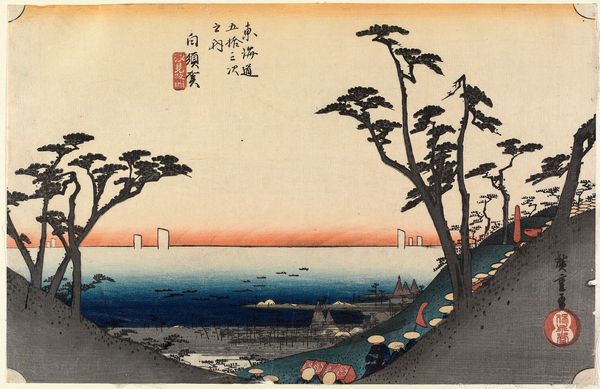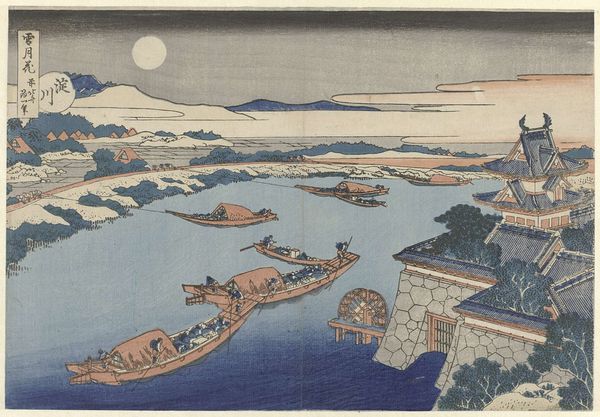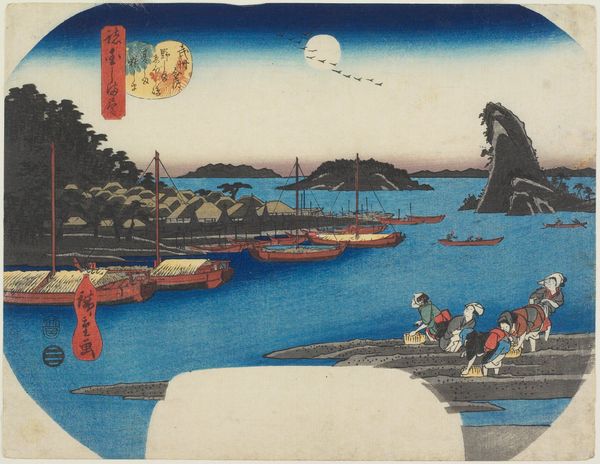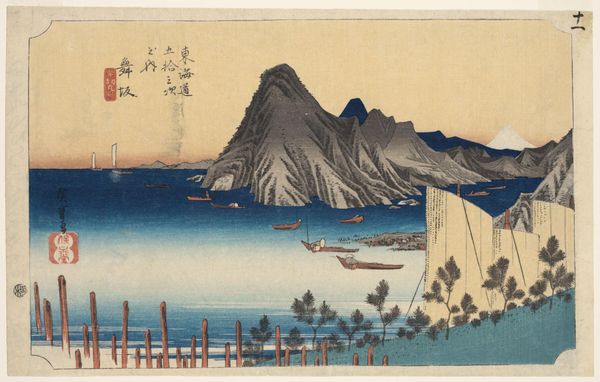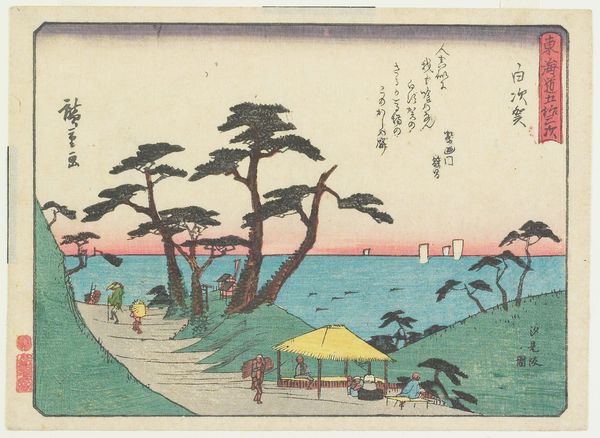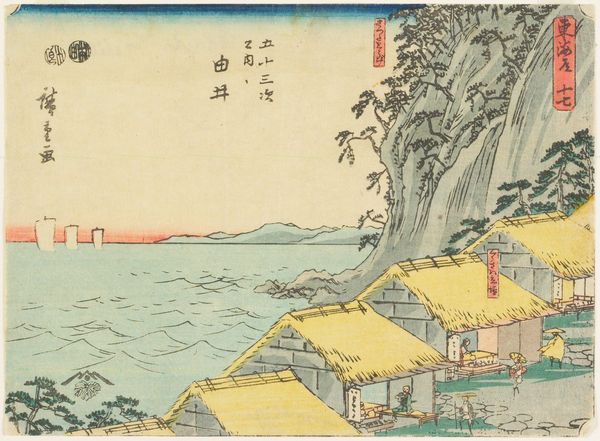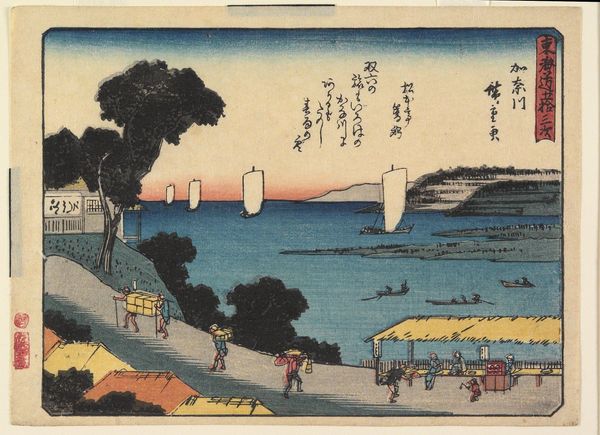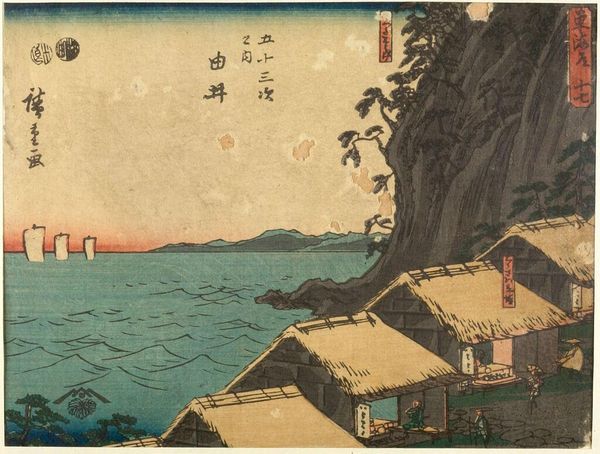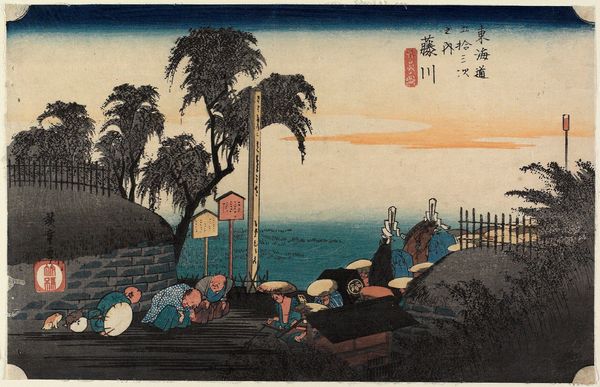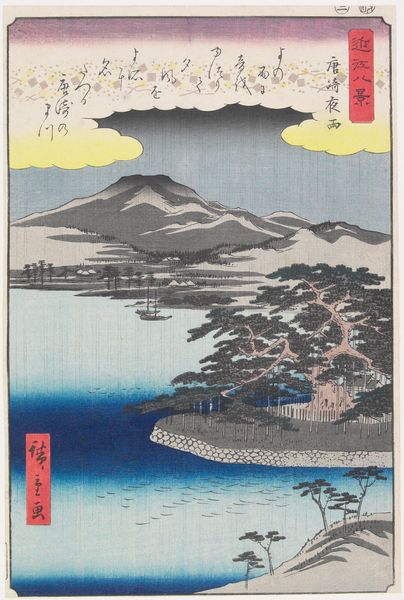
woodblock-print
#
asian-art
#
landscape
#
ukiyo-e
#
woodblock-print
Dimensions: height 227 mm, width 339 mm
Copyright: Rijks Museum: Open Domain
Utagawa Hiroshige made this woodblock print titled ‘Het klif te Kokufu in de provincie Shimosa’ sometime in the mid-19th century. The image presents a seemingly tranquil coastal scene, but we should understand it within Japan’s history of landscape prints as commodities in an expanding tourist industry. Consider how the composition directs the viewer's gaze. The figures on the cliff, dwarfed by the natural landscape, emphasize the insignificance of human presence. This aesthetic chimes with the philosophy of Zen Buddhism, which became increasingly fashionable among the merchant classes of Edo-period Japan, but these were also the people consuming these images. This was a period when the Tokugawa shogunate enforced strict social hierarchies and isolationist policies. Woodblock prints like this offered a controlled form of escapism. Understanding this artwork requires that we consider the economic and social context that shaped both its production and consumption. We need to ask who was buying these prints and what desires they fulfilled. Art history here relies on social and economic history.
Comments
No comments
Be the first to comment and join the conversation on the ultimate creative platform.
